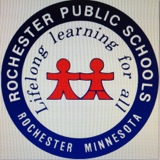Information
-
School Site
-
Room #
-
Document No.
-
Teacher Name
-
Conducted on
-
Conducted by
-
Location
A. General Work Environment
-
1. Emergency eyewash stations are regularly tested and documented (weekly) by lab personnel?
-
2. Emergency shower is tested at least annually by Facilities Services?
-
3. Emergency eyewash and shower are accessible?
-
4. Fire extinguisher is mounted on the wall and access is not blocked by equipment or supplies?
-
5. All exits are unobstructed?
-
6. Aisles are uncluttered and are without tripping hazards?
-
7. Is there a properly marked and easily accessible master gas shut off valve in the room?
-
8. Are there designated containers for broken glassware and other sharp objects?
-
9. Required protective equipment (such as gloves, safety glasses, goggles) is available and in functional condition?<br>
-
10. Are the lab, prep area and chemical storage area kept orderly?
-
11. Is the ventilation to the storage room exhausted separately from the classroom?
C. Electrical Hazards
-
1. Flexible cords are in good condition?
-
2. Cover plates are in place for outlets and switches?
-
3. Circuit breaker panels are unobstructed?
-
4. If aquariums are being used, are heat lamps anchored or positioned so they do not pose a fire risk?
-
8. Ground fault circuit interrupters (GFCI) are used for wet/exterior use?
D. Chemical Storage
-
1. Shelving is adequate for loads imposed?
-
2. Refrigeration units for chemical storage are labeled No Food?
-
3. Chemical storage cabinets are properly labeled?
-
4. Containers are clearly labeled with entire chemical name(s)?
-
5. Containers are kept closed?
-
7. Containers are compatible with the chemical?
-
8. Chemicals are segregated to avoid incompatibilities?
-
9. Large/heavy containers are stored on lower shelves?
-
10. Corrosives are not stored above eye level?
-
11. Storage quantities are minimized?
-
13. Materials with shelf lives are dated and disposed of per supplier's recommendations?
-
14. Are spill control methods readily available while the lab is in use?
-
15. Are chemicals not in use stored in a locked facility or cabinet with limited access?
-
16. Are acids stored in a dedicated acids cabinet?
-
17. Is nitric acid stored alone unless in a separate compartment just for it?
-
18. Are food containers used for chemical storage?
E. Flammables
-
1. Flammables are stored in flammable liquid storage cabinet?
-
2. Flammables are separated from strong oxidizers?
-
3. Flammable liquids are not stored near hot plates or other ignition sources?
F. Fume Hood
-
1. Each chemical fume hood has been inspected for flow at least annually and documented at fume hood?
-
2. Fume hood vents (baffles) are unobstructed?
-
3. Fume hoods are used with sash in appropriate position?
-
4. Fume hood is orderly and not used for chemical storage?
Summary
-
Based on the findings and observations made on the day of this inspection, the laboratory in room # HERE are in general compliance with OSHA Standard 1910.1450 and UTIA laboratory safety requirements based on current operations.
Corrective Actions
-
Based on the observations presented in this report, there are no corrective actions for the Principal Investigator or laboratory personnel.
Recommendations
-
Recommendation:
-
Please sign upon Audit completion








